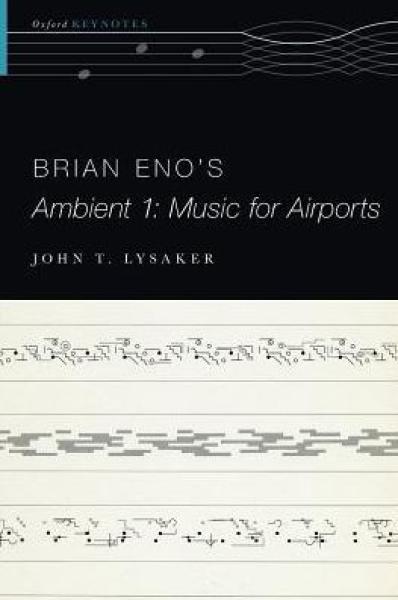Description
To appreciate the album's multifaceted character, Lysaker advocates for prismatic listening, an attentiveness that continually shifts registers in the knowledge that no single approach can grasp the work as a whole. Exploring each of the album's four tracks and their unique sonic arrangements, Brian Eno's Ambient 1: Music for Airports argues that the album must be approached from at least three angles: as an ambient contribution to lived environments that draws upon cybernetics and the experiments of Erik Satie, as an exploration of what John Cage has termed the activity of sounds, and as a work of conceptual art that asks us to think freshly about artistic creativity, listening, and the broad ecology of interactions that not only make art possible, but the full range of human meaning.
If one listens in this way, Music for Airports becomes a sonic image that blurs the nature-culture distinction and rescues the most interesting concerns of avant-garde music from the social isolation of concert halls and performance spaces.
Lysaker empowers listeners and gives a deep lesson on the musical, cultural, and philosophical intersections they hear in Music For Airports. And beyond Eno, this book's ideas are valuable to the concerns and functions of ambient music at large. The focus here on coexisting levels of attentive depth is a welcome addition to our understanding of this, a music that proves itself more relevant every day. -- S. Alexander Reed, Ph.D., Associate Professor at Ithaca College and author of Assimilate: A Critical History of Industrial Music
MFA quietly and resolutely challenges many received ideas about music; John Lysaker's new book provides a wonderfully wide-ranging, non-technical guide to the record in all its aspects, musical, social and philosophical. A mindful, multi-faceted examination of a mindful, multi-faceted masterpiece. -- Evan Ziporyn, Distinguished Professor and Director of Center for Art, Science & Technology, Massachusetts Institute of Technology, Producer/Arranger, Bang on a Can Music for Airports
Product Details
- Oxford University Press, Brand
- Dec 17, 2018 Pub Date:
- 0190497300 ISBN-10:
- 9780190497309 ISBN-13:
- 184 Pages
- 8.1 in * 5.4 in * 0.6 in Dimensions:
- 1 lb Weight:




